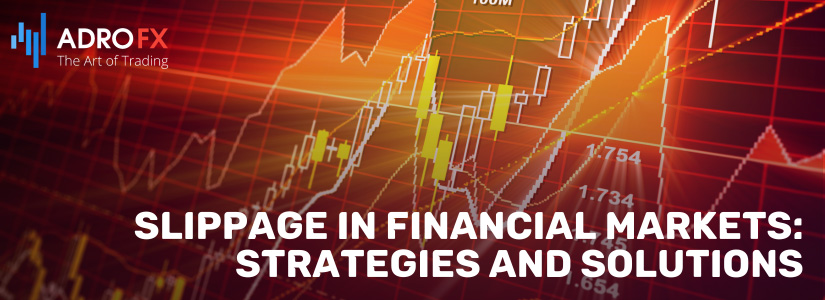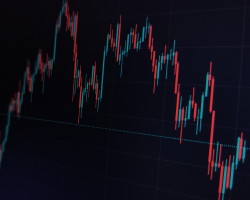Slippage in Financial Markets: Strategies and Solutions

Have you ever experienced the frustration of initiating a trade at a specific price only to witness the order being executed at an entirely different level? This commonplace occurrence in the financial markets is known as slippage. In fact, it's a daily encounter for many day traders and even investors.
Slippage can be particularly detrimental to day traders as it has the potential to erode profits or even result in losses. In this article, we will delve into the concept of slippage and explore strategies to mitigate its impact on traders.
Understanding Slippage
As mentioned earlier, slippage occurs when an order is executed at a price different from the one initially specified by the trader. The degree of variance can vary; in the forex market, it might only be a few pips, whereas in stocks and other asset classes, it could be substantially more significant.
For instance, if you intend to buy shares of Apple at $120, the actual execution might transpire at $121 or $119. Although these differences may appear trivial, they can have a substantial real-world impact on your trading outcomes.
Impact of Slippage on Day Trading
The impact of slippage can be particularly pronounced in the realm of day trading. Swing traders and long-term investors typically have less concern about slippage since their focus lies on holding positions for days or even months. On the other hand, scalpers, who concentrate on short-term price movements, are more susceptible to the negative consequences of slippage.
Consider a scenario where a scalper purchases a stock at $120.05, hoping to capture profits when it reaches $120.15. In this context, slippage can directly impede the profitability of scalping strategies. Ultimately, this phenomenon can lead to diminished profits or, in some instances, unanticipated losses in the market. Hence, it is imperative to bear the issue of slippage in mind before executing any trade.
 Slippage Across Different Assets
Slippage Across Different Assets
Slippage is not confined to a specific asset class. It transpires across the spectrum of financial assets, whether it's stocks like Nvidia and Tesla, forex pairs such as EUR/USD and GBP/USD, or other instruments like cryptocurrencies and bonds.
Positive and Negative Slippage
Slippage is characterized by the execution of a trade at a price distinct from the one initially anticipated by the trader. In most instances, this deviation is considered unfavorable, as it can lead to financial losses. However, it's worth noting that, on occasion, slippage can yield a positive outcome if the resulting price is more advantageous. For example, if a buy order is executed at $10.20, a minor delay might result in an execution at $10.18.
The Mechanics Behind Slippage
As traders, it's easy to overlook the intricate processes that occur in the background when we execute trades. In reality, numerous factors come into play due to the dynamic nature of the market.
When you buy a stock, there must be a corresponding seller, and vice versa when selling. Slippage arises as brokers endeavor to match buyers and sellers for the given asset. These transactions transpire at breakneck speeds, often in microseconds.
It's important to recognize that slippage can work both in favor of and against you. For example, if you buy a stock at $20 and the order is executed at $18, your profit potential increases if your market analysis is accurate. Nonetheless, in most cases, slippage tends to act to the detriment of traders.
The Influence of Order Types on Slippage
In the realm of trading, the type of order you use can significantly impact the occurrence of slippage. Essentially, there are two primary categories of orders: market orders and pending orders. Market orders are the most prevalent and are executed instantly upon placement.
Conversely, pending orders entail traders instructing their brokers to execute a trade at a specific price. Within the category of pending orders, there are two predominant types: limit and stop orders.
A buy-stop order is employed to initiate a buy trade above the prevailing market price, while a sell-stop order triggers a sell trade below the current price. In contrast, a buy-limit order dictates a buy trade below the present market price, while a sell-limit order directs a short trade to occur above the current market price.
It's important to recognize that slippage can manifest in both market and limit orders, especially in volatile markets. However, it is more frequently encountered with market orders. Consequently, many traders advise the use of pending orders as a means of mitigating slippage.
Primary Catalysts for Slippage
The discrepancy between the intended order placement and the actual execution can be attributed to several key factors. These factors serve as the primary causes of slippage:
- High Volatility
One of the most significant drivers of slippage is heightened market volatility. This phenomenon occurs when significant news or economic data prompts substantial fluctuations in the market. During such periods, brokers often grapple with the rapid filling of orders, resulting in price disparities between execution and placement. - Low Liquidity
Slippage can also be attributed to market conditions characterized by low liquidity. As previously mentioned, the market relies on the presence of both buyers and sellers for its smooth operation. While this scenario is relatively uncommon, there are instances when there is an inadequate number of participants in the market, leading to diminished liquidity. This can, in turn, lead to delays in order execution. - Technological Glitches
Another factor contributing to slippage is technological glitches. Although infrequent, behind-the-scenes technical errors can lead to disparities in prices between order placement and execution. - Internet Speed
Internet speed can exert a significant influence on slippage. A slower internet connection can lead to delays in order execution. For instance, if you place a buy order at $100, a slower internet connection might result in execution at $100.10.
In summary, slippage is an intricate phenomenon in the world of trading, influenced by various elements such as the type of order used, market conditions, and technological factors. Traders must be mindful of these factors and employ strategies to minimize the impact of slippage on their trading activities.
 Strategies to Minimize Slippage
Strategies to Minimize Slippage
Slippage is an inherent challenge in trading, but there are various strategies you can employ to mitigate its impact. Here's how to avoid or minimize slippage:
- Avoid Volatile Periods
Slippage is often more pronounced during periods of high volatility. For stocks, consider refraining from opening trades just before or after a company releases its financial results, as these events are often associated with increased price fluctuations. Similarly, in the world of currency trading, be cautious during major events or economic releases like nonfarm payroll reports and interest rate decisions, as these moments tend to experience higher slippage. - Focus on Liquid Assets
Choose to trade popular assets with deep liquidity to reduce the likelihood of slippage. In the forex market, focus on major currency pairs such as EUR/USD and USD/JPY rather than exotic pairs with lower liquidity, like TRY/ZAR. - Optimize Technology
Ensure you have a fast and stable internet connection and use a high-performance computer or smartphone for trading. A delay in order execution can result from slow internet speeds, so having a reliable setup can help minimize this issue. - Utilize Pending Orders
Employ pending orders, which are instructions to your broker to execute trades when specific conditions are met. These orders include buy/sell limits and buy/sell stops. While they may experience slight execution gaps, they tend to encounter less slippage compared to market orders.
Risk Management in Slippage Mitigation
Effective risk management is paramount in trading to safeguard your capital and profits. Slippage is just one element of this broader risk management strategy. Here are some risk management strategies when dealing with slippage:
- Invest in Quality Equipment: Ensure you have a robust trading setup, including a reliable computer or smartphone and a high-speed internet connection. By investing in top-notch equipment, you can reduce the likelihood of slippage due to technology-related issues.
- Implement Stop Loss and Take Profit Orders
Always set StopLoss and Take Profit orders when opening positions. These orders help you limit potential losses and secure profits, providing a clear exit strategy even in the presence of slippage. - Diversify Your Portfolio
Avoid overconcentration in a single asset or market. Diversifying your portfolio can help spread risk and reduce the impact of slippage on your overall trading performance. - Practice Proper Position Sizing
Use appropriate position sizing to ensure that a single trade doesn't overly impact your account balance. This helps you manage risk and potential losses resulting from slippage.
In conclusion, while it may be challenging to completely eliminate slippage, traders can employ a combination of proactive measures to reduce its occurrence and implement effective risk management strategies to protect their trading capital and achieve more consistent trading results.
Summary
In conclusion, the phenomenon of slippage is an intricate and often frustrating aspect of the financial markets that traders frequently encounter. It's particularly relevant for day traders and investors alike, and understanding its causes and effects is essential for successful trading.
Slippage, characterized by the execution of a trade at a price different from the intended level, can have a significant impact on trading outcomes. While the degree of slippage may seem minor at times, it can accumulate and lead to substantial losses, especially for those engaged in short-term trading strategies.
We explored the fundamental reasons behind slippage, such as high market volatility, low liquidity, technological glitches, and internet speed disparities. These factors can contribute to slippage, making it a crucial consideration for traders.
To mitigate the impact of slippage, various strategies were discussed. Traders can avoid volatile periods, focus on liquid assets, optimize their trading technology, and utilize pending orders to reduce the occurrence of slippage. Additionally, effective risk management strategies, such as setting stop-loss and take-profit orders, diversifying portfolios, and proper position sizing, play a vital role in safeguarding capital and managing slippage-related risks.
While it may be challenging to entirely eliminate slippage, traders can employ a combination of proactive measures and prudent risk management techniques to navigate the complexities of the financial markets with greater confidence and consistency. By understanding the intricacies of slippage and employing these strategies, traders can enhance their ability to achieve their financial goals in the dynamic world of trading.
About AdroFx
Established in 2018, AdroFx is known for its high technology and its ability to deliver high-quality brokerage services in more than 200 countries around the world. AdroFx makes every effort to keep its customers satisfied and to meet all the trading needs of any trader. With the five types of trading accounts, we have all it takes to fit any traders` needs and styles. The company provides access to 115+ trading instruments, including currencies, metals, stocks, and cryptocurrencies, which make it possible to make the most out of trading on the financial markets. Considering all the above, AdroFx is the perfect variant for anyone who doesn't settle for less than the best.










